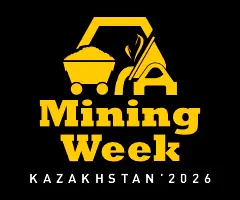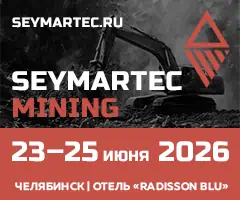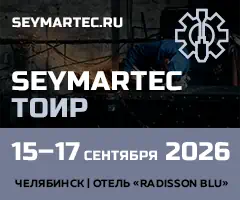Technological and marketing trends in the mining industry
 S.V. Karpova , O.E. Ustinova
S.V. Karpova , O.E. Ustinova
Financial University under the Government of the Russian Federation, Moscow, Russian Federation
Russian Mining Industry №3 / 2025 p.170-179
Abstract: The modern mining industry is undergoing a fundamental transformation under the influence of digitalization and technological innovations. The research aims to identify and systematize key technological and marketing trends in the coal industry, with a particular focus on digital technologies, automation, and environmental sustainability. The research methodology is based on a comprehensive analysis of data from the industry leaders, statistical indicators and market trends using a multilevel approach to assessing the effectiveness of innovation. The results demonstrate a 37% increase in investments in technology solutions over the past three years, with a priority focus on artificial intelligence, the Internet of things, and digital twins. It was revealed that companies that have implemented integrated digital solutions have achieved a 23.6% reduction in operating costs and a 29.4% increase in labor productivity. A correlation has been established between digitalization and indicators of sustainable development: reducing the carbon footprint by 18.7% and improving the occupational safety by 42.3%. In the marketing sector, there is a transition to a model of responsible consumption, which is reflected in the growth of premium segments of eco-friendly products by 31.2%. The practical significance of the research lies in the formation of strategic recommendations for coal market players on prioritizing technological investments and adapting marketing strategies to the new market realities.
Keywords: digital transformation, coal mining, artificial intelligence, sustainable development, Internet of Things, predictive analytics, ESG strategies
For citation: Karpova S.V., Ustinova O.E. Technological and marketing trends in the mining industry. Russian Mining Industry. 2025;(3):170–179. (In Russ.) https://doi.org/10.30686/1609-9192-2025-3-170-179
Article info
Received: 18.03.2025
Revised: 15.05.2025
Accepted: 15.05.2025
Information about the authors
Svetlana V. Karpova – Dr. Sci. (Econ.), Professor, Head of the Marketing Department, Director of the Institute of Management Research and Consulting, Faculty of "Higher School of Management", Financial University under the Government of the Russian Federation, Moscow, Russian Federation; https://orcid.org/0000-0002-4488-8131; e-mail: This email address is being protected from spambots. You need JavaScript enabled to view it.
Olga E. Ustinova – Cand. Sci. (Econ.), Associate Professor, Department of Strategic and Innovative Development, Faculty of "Higher School of Management", Financial University under the Government of the Russian Federation, Moscow, Russian Federation; e-mail: This email address is being protected from spambots. You need JavaScript enabled to view it.
References
1. Ali D., Frimpong S. Artificial intelligence, machine learning and process automation: existing knowledge frontier and way forward for mining sector. Artificial Intelligence Review. 2020;53:6025–6042. https://doi.org/10.1007/s10462-020-09841-6
2. Barnewold L., Lottermoser B.G. Identification of digital technologies and digitalisation trends in the mining industry. International Journal of Mining Science and Technology. 2020;30(6):747–757. https://doi.org/10.1016/j.ijmst.2020.07.003
3. Fareri S., Fantoni G., Chiarello F., Coli E., Binda A. Estimating Estimating Industry 4.0 impact on job profiles and skills using text mining. Computers in Industry. 2020;118:103222. https://doi.org/10.1016/j.compind.2020.103222
4. Onifade M., Said K.O., Shivute A.P. Safe mining operations through technological advancement. Process Safety and Environmental Protection. 2023;175:251–258. https://doi.org/10.1016/j.psep.2023.05.052
5. Pouresmaieli M., Ataei M., Taran A. Future mining based on internet of things (IoT) and sustainability challenges. International Journal of Sustainable Development & World Ecology. 2023;30(2):211–228. https://doi.org/10.1080/13504509.2022.2137261
6. Xu Y., Wang L., Xiong Y., Wang M., Xie X. Does digital transformation foster corporate social responsibility? Evidence from Chinese mining industry. Journal of Environmental Management. 2023;344:118646. https://doi.org/10.1016/j.jenvman.2023.118646
7. Cacciuttolo C., Guzmán V., Catriñir P., Atencio E., Komarizadehasl S., Lozano-Galant J.A. Low-cost sensors technologies for monitoring sustainability and safety issues in mining activities: advances, gaps, and future directions in the digitalization for smart mining. Sensors. 2023;23(15):6846. https://doi.org/10.3390/s23156846
8. Минбалеев А.В., Берестнев М.А., Евсиков К.С. Регулирование использования искусственного интеллекта в добывающей промышленности. Известия Тульского государственного университета. Науки о Земле. 2022;(2):509–525. Minbaleev A.V., Berestnev M.A., Evsikov K.S. Regulating the use of artificial intelligence in the mining industry. Izvestiya Tulskogo Gosudarstvennogo Universiteta. Nauki o Zemle. 2022;(2):509–525. (In Russ.)
9. Wei Y., Han C., Yu Z. An environment safety monitoring system for agricultural production based on artificial intelligence, cloud computing and big data networks. Journal of Cloud Computing. 2023;12:83. https://doi.org/10.1186/s13677-023-00463-1
10. Mishra A.K. AI4R2R (AI for Rock to Revenue): A review of the applications of ai in mineral processing. Minerals. 2021;11(10):1118. https://doi.org/10.3390/min11101118
11. Sirisha J., Vuddanti S., Ramesh J.V.N. A review based investigation of exploratory analysis in ai and machine learning for a variety of applications. International Journal on Recent and Innovation Trends in Computing and Communication. 2022;10(2s):182–185. https://doi.org/10.17762/ijritcc.v10i2s.5926




